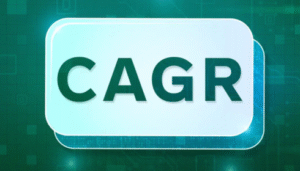1. What is a remote team?
A remote team comprises employees who are dispersed in various locations instead of working from one central office. They collaborate on tasks, share ideas, and monitor progress using digital tools such as communication apps, project management software, and cloud platforms.
2. What are the advantages of managing a remote team?
Managing remote teams offers several benefits, such as lower operational costs, access to a wider talent pool, flexibility for team members, and the ability to work from any location. It can increase work-life balance and foster a results-oriented culture.
3. What are the challenges of managing remote teams?
Common challenges include maintaining communication, ensuring productivity, fostering team collaboration, building company culture, handling time zone differences, and tracking performance without direct supervision.
4. How to communicate with distributed teams effectively?
Effective communication should include the right balance between real-time (Zoom, Slack) and updates without immediate reaction tools (email, task management applications). The point is to keep your message clear and communicated regularly.
5. Which are the right tools for remote teams management?
Popular tools for remote team management are Slack (team chat), Zoom (video conferencing), Asana or Trello (project management), Google Workspace or Microsoft 365 (file sharing and collaboration), and Time Doctor or Toggl (time tracking).
6. How can I maintain the engagement of a remote team?
To keep your remote team engaged, open lines of communication, encourage regular check-ins, create opportunities for feedback, celebrate successes, and organize virtual team-building activities. Regular recognition and appreciation boost morale.
7. How can I ensure my remote team remains productive?
Setting clear goals, providing the right tools, tracking progress with project management software, having regular one-on-ones with team members, and ensuring proper onboarding are key for maintaining productivity remotely.
8. How do I measure success with remote teams?
KPIs for remote teams can include project completion rates, the quality of deliverables, adherence to deadlines, team satisfaction levels, and overall work efficiency. Focus on outcomes rather than process.
9. What is the role of trust in managing remote teams?
Trust is one of the great factors that allow success for remote workers. Trust is having the reliability in seeing work from a manager, openness in conversation, making expectations clear, and trusting them to accomplish work without constant supervision.
10. How do I handle difference time zones for remote teams?
Manage time zone differences by overlapping work hours for essential meetings, scheduling tools, and a shared calendar for team events. Be flexible about working hours and mindful of the challenges of coordinating across multiple zones.
11. What are the best practices for conducting remote meetings?
For effective remote meetings, set clear agendas, keep the meeting focused and concise, encourage participation, use video calls for better engagement, and send meeting notes to keep everyone aligned. Respect participants’ time zones and availability at all times.
12. How do I create collaboration in a remote team?
Use collaborative tools such as Google Docs, Asana, or Miro to share ideas and work on tasks in real time. Promote cross-functional communication through regular check-ins and team meetings to ensure everyone is on the same page.
13. How do I build company culture remotely?
The creation of remote company culture may be achieved through encouraging transparency, the facilitation of bonding events within the team (virtual happy hours, games), and the fostering of shared values. Celebrate milestones and solicit feedback to promote feelings of belonging.
14. How can I prevent burnout in remote teams?
Prevent burnout by encouraging work-life balance, flexible schedule, reasonable workload, time off, and recognition of signs. Regular check-ins and feedback help one identify and ward off burnout early.
15. How can I help my remote workers connect with the team?
Create connection: regular team meetings, informal chats, virtual team-building events, and one-on-one meetings. Recognition and regular encouragement can make remote employees feel appreciated and included.
16. How do I manage performance at a distance?
Manage performance through clear expectations, tracking of the key metrics, regular feedback, and results-based focus. Employ digital tools for smooth, efficient task management and transparently track progress on each task.
17. What is asynchronous communication and why is it an essential tool for teams working remotely?
Asynchronous communication happens when team members exchange messages or updates without requiring an immediate response. Examples include email and project updates. It’s essential for remote teams as it accounts for different time zones and allows for more thoughtful and comprehensive communication.
18. How do I manage a remote team’s workload?
This means making sure that the workload is distributed appropriately, prioritized clearly, and managed using appropriate project management tools that track each individual’s workloads. It’s easy to control potential imbalances through regular check-ins.
19. How do I onboard new team members remotely?
This would include virtual meetings with the team, training on tools and company processes, and provision of key resources and guidelines. Access to all types of internal documentation should be granted, and check-ins must be scheduled regularly for support during their onboarding period.
20. How do I address conflicts in a remote team?
Address conflicts proactively by fostering an environment of respect and transparency. Facilitate open discussions between the involved parties and offer mediation if necessary. Act swiftly to resolve issues and prevent them from affecting team morale.
21. How do I build a high-performing remote team?
Foster a results-oriented culture by setting clear expectations, offering consistent feedback, providing development opportunities, promoting ownership, and ensuring continuous communication. Encourage collaboration and maintain transparency to achieve shared goals.
22. How do I maintain accountability in remote teams?
Establish clear goals and expectations, use tracking tools to monitor progress, hold team members accountable with regular check-ins, and make sure performance and deliverables are discussed openly during meetings. Accountability thrives on clarity and communication.
23. What type of training is important for remote teams?
The areas where remote teams would be trained are in the area of remote communication, time management, cybersecurity, and proper usage of collaboration tools. There must be constant opportunities for development that would keep teams interested and developing skills.
24. How do I perform performance reviews on a remote team?
Performance reviews for remote teams must be more results-oriented, individual growth oriented, and oriented toward overall goals of the organization. Structured feedback, offering actionable advice to improve, and talking about career development are few that may fit into remote work dynamics.
25. What is the hiring process for remote teams?
For remote hiring, look for candidates who can work independently and are self-disciplined. Evaluate their technical skills, communication skills, and comfort with remote work dynamics. Conduct video interviews and ask for examples of previous remote work experience.
26. How do I keep remote employees satisfied?
To ensure job satisfaction, provide opportunities for professional growth, regular feedback, autonomy, recognition of achievements, and support when necessary. Creating a positive work environment encourages engagement and retention.
27. How do I boost team morale remotely?
Boost morale by giving recognition for what they have done, providing support towards personal well-being, celebrating of milestones, and team-building events. Virtual parties, celebrations, or personalized notes can make big differences in motivating your team.
28. How do I keep in touch with remote employees with different time zones?
Coordinate meetings at times that work across most time zones. Offer flexibility to your employees by making sure there’s nothing that requires them to be online outside of reasonable working hours. Use asynchronous communication tools whenever possible.
29. How do I manage sensitive information and data when I work remotely?
Implement strong cyber security measures like encrypted communication channels, secure file-sharing platforms, and strong password practices. Ensure clear policies are set regarding access to data, confidentiality, and privacy.
30. Flexible hours for my remote team?
Absolutely, flexible hours are one of the biggest perks of remote work. Allowing flexibility based on personal schedules or time zone differences can increase employee satisfaction while maintaining productivity.
31. How do I create a remote work policy?
A remote work policy should outline work hours, communication standards, performance expectations, tool usage, data security, and guidelines on paid time off. It should provide clarity on the rules and expectations for both the company and employees.
32. How can I avoid isolation in remote teams?
Encourage virtual social activities, facilitate online discussions, and foster open communication. Ensure that the employees are encouraged to collaborate with each other and allow informal channels to build personal connections.
33. How can I effectively manage time zone overlaps?
Create a shared calendar showing important time zone overlaps and rotate meeting times to accommodate different team members. Be mindful of scheduling early or late meetings so that team members in different zones don’t face undue stress.
34. What is the role of technology in managing remote teams?
Technology allows for remote teams to collaborate, communicate, and remain productive. Processes are streamlined by cloud-based document sharing, video calls, time tracking, and project management software, keeping everyone in line.
35. What are the key qualities of a successful remote manager?
A successful remote manager is communicative, trustworthy, adaptable, organized, and empathetic. They maintain transparency, ensure team alignment, and actively address concerns while providing clear goals and support to remote employees.
36. How do I manage performance issues of remote team members?
If a remote worker is underperformance, one is expected to act professionally and appropriately by supporting how the causes come about. One is in a position to give feedback. Action plans and helping him with his problem, too.
37. How would I nurture my remote team of leaders?
Engage the leadership: identify high potential, mentor, and encourage the people to take on project ownership. Provide leadership development, and the team leaders will have the tools to lead effectively.
38. What are some of the ways that can enhance the creativity of a remote team?
Let employees feel free to brainstorm, create the atmosphere to allow individuals to voice one another, acknowledge innovation, and afford employees space for experimenting. You should instil that culture of creativity in the whole team, where all members feel their ideas are valued.
39. How do I track remote team milestones?
You can track milestones by project management tools, check-ins, and visible dashboards. Ensure to celebrate the wins and identify the momentum behind how it is driving progress toward the objective for the team.
40. What should I do if my team is not performing well while working remotely?
Identify the underlying causes, which may be unclear expectations, lack of communication, or burnout. Provide resources, support, and reassess workloads. The issues must be addressed as a team to rebuild momentum and ensure that the team understands performance standards.
41. How do I recognize and reward remote employees?
Recognize remote employees through virtual shout-outs, reward systems, public acknowledgment in meetings, bonuses, or gift cards. Make sure to acknowledge individual contributions frequently to motivate and retain your team.
42. How can I create a shared team vision for remote employees?
Align your team to the company’s mission and purpose to create a shared team vision. The team vision needs to be repeated at every meeting and feedback must be encouraged, so that every member feels invested in the success of the team.
43. Do I hire people from different time zones?
Hiring employees from other time zones can expand your talent pool and expose you to different viewpoints. However, you should also set clear work hours, standards for effective communication, and tools to keep the team aligned despite the time differences.
44. How do I manage a multigenerational remote team?
Adjust management styles to fit the individual preferences and strengths of each generation. Use technology, provide mentoring opportunities, and ensure everyone feels valued regardless of their age or experience level. Embrace the diversity of perspectives.
45. How can I hold them accountable without being a micromanager?
Set clear goals, use project management tools to track progress, and check-in regularly through one-on-ones. Give the employee the ability to manage his/her own tasks but keep a clear view on their performance. Focus on results rather than process.
46. How do I encourage mental well-being in distributed teams?
Promote mental health by encouraging time off, offering mental health resources, reducing workloads when needed, creating a supportive culture, and encouraging team members to openly share concerns without fear of judgment.
47. How do I make remote teams more collaborative?
Structured meetings, joint projects, team channels, and collaboration platforms are tools that facilitate collaboration. Spaces for spontaneous conversations must be created while encouraging open communication across teams.
48. What kind of environment supports remote employees’ motivation?
A productive environment for remote employees includes clear goals, autonomy, trust from leadership, flexibility, and consistent communication. Opportunities for skill development and a positive workplace culture enhance motivation.
49. How can I build transparency in remote teams?
Promote transparency by ensuring open channels of communication, sharing important information regularly, and involving your team in decision-making processes. Let your team know how their work impacts the company.
50. How do I sustain a long-term remote work model?
Sustain a long-term remote work model by maintaining a clear remote work policy, keeping communication open, fostering team relationships, focusing on work-life balance, and continuously evaluating the performance of both tools and team culture.
Managing remote teams requires intentional communication, clear processes, and trust. By fostering a flexible, communicative, and supportive remote culture, your team can perform optimally and achieve greater success.








